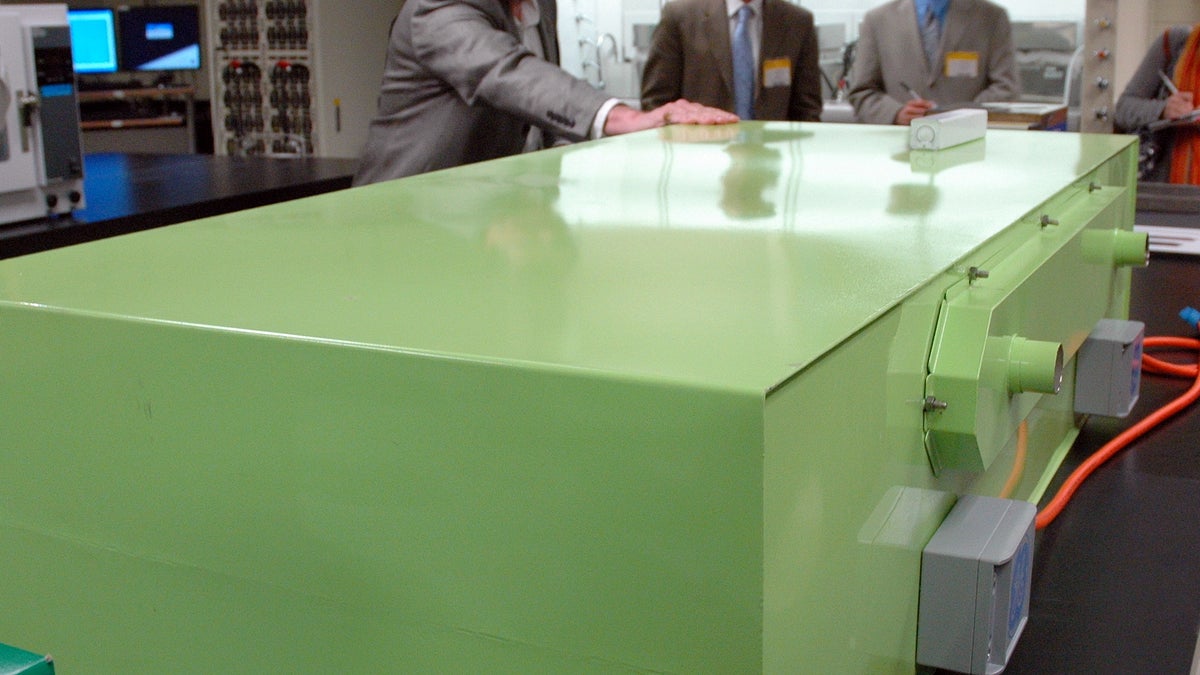Why Apple's manufacturing model won't work in new industries
To innovate in energy, biotech, and advanced materials, U.S. companies need to locate manufacturing in the U.S. and not outsource production as the IT industry does, according to experts.

CAMBRIDGE, Mass.--Don't write off American manufacturing just yet.
A panel of experts at the EmTech conference at the Massachusetts Institute of Technology today sought to upend a few notions about the viability of manufacturing in the U.S., saying labor costs are less and less relevant in the global economy.
More provocatively, they argued that innovation in emerging technologies, such as energy and nanotech, depends on having nearby production. That's a change from the traditional model of the IT industry where hardware giants, such as Cisco Systems, Apple, and Hewlett-Packard, designed products and then contracted with Asian suppliers for their assembly.
Those high-tech companies, which were major drivers of economic growth, were able to separate design and production using computer-based models and modular components. But that's not the case in many industries, including batteries, biotech, solar, wind, and new materials, which are poised for growth.
"There we don't see the same kinds of modularity, there we need the tighter integration between R &D, early prototypes, and early manufacturing," said Suzanne Berger, a professor of political science at MIT, which is one of the universities involved in the Advanced Manufacturing Partnership convened by the White House.
"If we don't have the right production capabilities to dig deeper along the process, then the whole process in fact rolls over to wherever the production is taking place. So it's not only that the production of wind and solar is taking place in China. A lot of the innovation is happening there, too," she said.
Although talk of factories may conjure up images of the 19th century Industrial Revolution, it's a very current topic in the wake of the bail outs of General Motors and Chrysler and billions in stimulus money pumped into domestic auto battery manufacturing.
Bankrupt solar company Solyndra received a $535 million loan to build a factory, which has led some politicians to say the U.S. cannot compete internationally in manufacturing and should instead focus on service industries, such as finance and real estate.
But in many emerging materials and energy-related industries, commercializing a technology often requires a manufacturing infrastructure. For example, Kodak was one of the first to develop organic LEDs, but because flat-panel manufacturing had moved to Asia, the company could not develop and refine the technology into a product in the U.S., explained Harvard professor Willy Shih.
Similarly, Kodak had difficulty moving into digital photography because film was its primary concern and there was no regional expertise in making cameras, Shih said. "Especially in immature products, often the process is the product," he said.
Labor arbitrage
Offering a number of examples, panelists said that the lack of manufacturing capability handicaps U.S. companies or prevents them from entering certain industries.
Because batteries for consumer electronics are made in Asia, U.S. companies are battling to gain a foothold in rechargeable batteries for hybrid and electric vehicles. Production of nuclear reactors requires a low-temperature steel forging process that is only available in a handful of countries outside the U.S. A novel energy storage system developed by MIT professor Sadoway for storing bulk renewable energy can only be made in countries that do large-scale aluminum production.
Education is another barrier to nurturing domestic production in the U.S., panelists said. The mindset for many U.S. manufacturers is that labor costs need to be driven as low as possible, while German companies have a practice of investing in workforce training.
"It's not because Germany has low labor costs that they're really doing so well. It's because they have a highly educated workforce. This is a country that has a trade surplus and a surplus even in its trade with China," said Berger.
On the question of labor costs, Berger said that wages are typically a small component of the total cost of production, compared to cost of energy, transportation, and access to materials. What's more relevant is unit labor costs, or how productive workers are, which means regions with higher costs need to continually improve productivity, she said.
• GE to build thin-film solar factory in Colorado
• Harsh lessons from Evergreen Solar's flame-out
• While Washington bickers, green tech goes local
The technology of manufacturing itself is undergoing substantial changes that allow companies to improve product design during the production process, said Christine Furtoss, global technology director for manufacturing and materials technologies at GE Global Research. Collecting sensors data from the manufacturing process and handling it with high-performance and cloud computing could help product manufacturers improve product quality and differentiation, she said.
GE is building a battery factory in upstate New York and last week announced plans to make a solar panel factory in Colorado, which it intends to open early next year. Moves such as those represent some momentum to establishing manufacturing near technology companies' research and development centers to improve product during production.
Overall, though manufacturing saw zero growth in the decade from 1998 to 2008, in part because companies focused too much on low-cost production, Berger said. In an interview after the panel, she recounted the story of a manufacturing company in Massachusetts whose business was decimated by a German rival. "I asked them why that happened, and they said they were focused on survivability. The Germans were focused on technology," she said.

